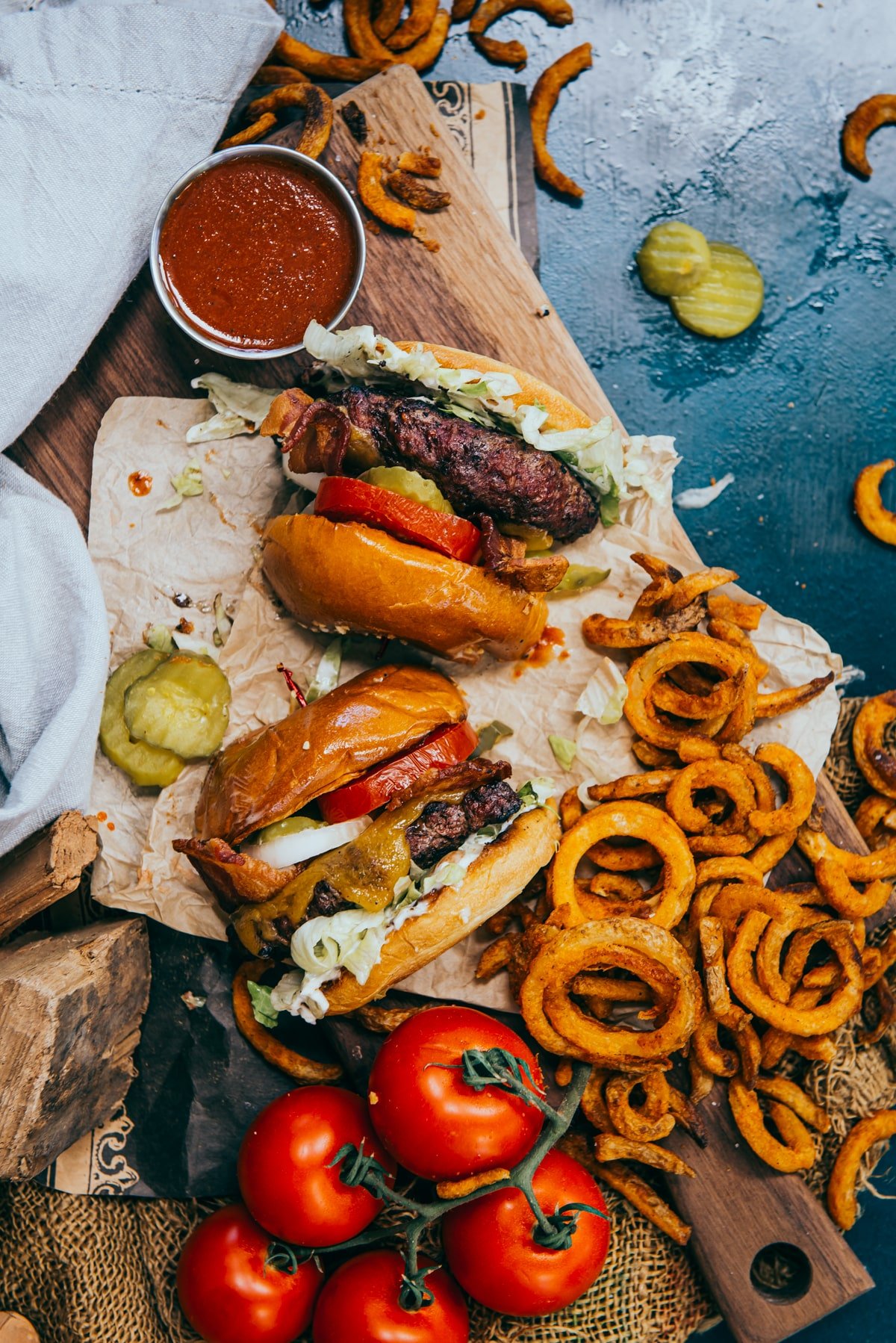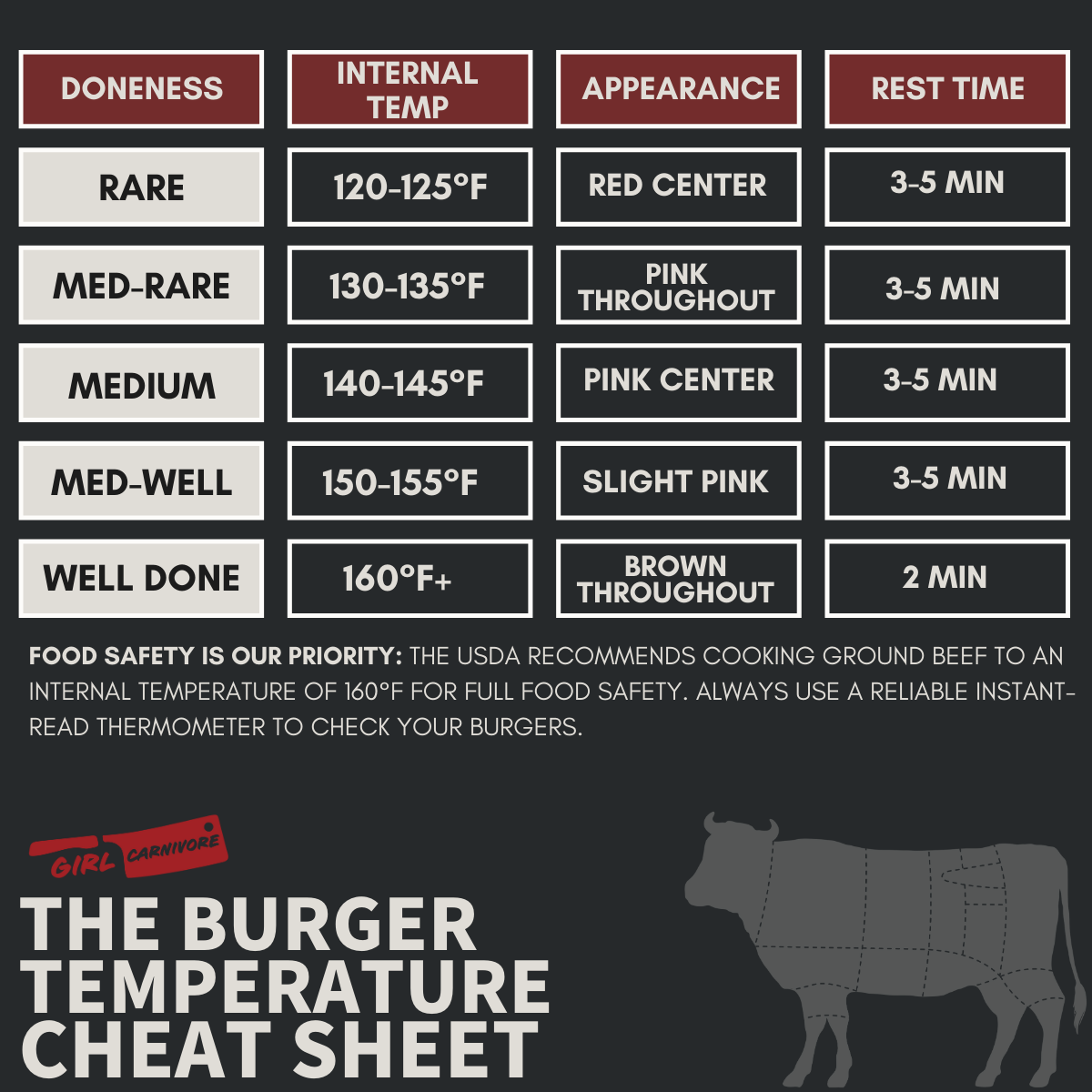As the mercury increases, even our collective impulse of turning on the grill. The scent of sizzling beef cakes that drift through the neighborhoods is practically the official perfume of spring. As an expert in barbecue, I learned over 10 years of testing hundreds of hamburger recipes that master are temperature control It becomes even more critical while we move on to the grid season.
Girl Carnivore Better Burger Basics
Quick suggestions from The Girl Carnivore Meat Labs:
- 🥩 Choose the right meat Choose 80/20 ground meat (i.e. 80% thin, 20% fat). Everything that is thinner and you are heading straight to dry and insipid hamburger. Grasso is essential for juiciness and flavor.
- 👊 Do not work the cake too much Form it gently, don’t crush it together. The overload creates dense and rubbery hamburgers who do not have the tender consistency we are looking for.
- 📏 Create a mentality Press a shallow dimple in the center of each cake with the thumb or back of a spoon. This prevents you from inflating in a meatball meat.
- Read our complete guide for How to master the burgers on any grid.

The secret for best burgers is not just “good meat”
Of course, quality meat counts. But the real turning point? Temperature control at each phase.
Here’s what most of the home cooks are missing:
1. Cold meat, hot grill
- Keep the cold minced meat until the exact moment that affects the heat. We are talking about the refrigerator, not “sitting on the counter while preparing everything else”. Why? Hot fat means fatty meatballs and dense instead of juicy and tender.
- For the tip: Form the meatballs, then put them back in the refrigerator for 20 minutes before cooking. This enterprise increases fat so that it melted to the perfect pace.
2. The trap for the Tertino formation temperature
- When your hands are hot (and they are hotter than you think), they transfer the heat to the meat while you are forming meatballs. This begins to dissolve the fat even before cooking begins.
- Our solution: Perform your hands under cold water for 30 seconds before handling meat or uses a burger press that has been cooled in the freezer for 10 minutes.
3. Grill vs. Griddle: the spring dilemma
As the temperatures climb, your cooking method matters more than you would think:
- Plate/cast iron: It maintains a constant temperature, creates a uniform crust and keeps the regulation at bay.
- Direct grill: It adds the flavor of smoke but requires more attention to prevent combustion with the increase in room temperatures. Look at our suggestions for creating the coal grid.
Join thousands of readers who trust us for suggestions of experts, appetizing recipes and step-by-step guides that help you cook like a professional. Sign up for Girl Carnivore here.
🌡️ The cheat Sheet of the Hamburger temperature


- Rare: 120-125 ° F-Centro Rosso, very juicy (not recommended for ground meat)
- Middle-Raid: 130-135 ° F-warm hot, very juicy red
- Average: 140-145 ° F-Rosa, juicy (our recommended weak point)
- Medium-podden: 150-155 ° F-slightly pink, less juicy
- Well done: 160 ° F and beyond – no pink juice, minimum
Remember: the The FDA recommends the minced meat of reaching 160 ° F For food safety, but with quality supply, many chefs prefer medium donation. Look here our full breakage of the burgers’ temperatures.


What is your hamburger stumbled?
We hear from the readers of their burgers’ struggles. Here are the first three:
Temperature fluctuations: Using a meat thermometer It is not “cheating” – that’s what professionals do. Our favorite is that Thermapene for speed and precision [link to girlcarnivore.com/recommended-tools].
Plot problems: If your burgers are dense hockey records, you are working on the meat too much. Manage it in the least and never press down during the kitchen (unless you are doing Bassh Burgers [link to girlcarnivore.com/smash-burgers] – This is a completely different technique).
Method confusion: Combine your cooking method with your hamburger style. Thick and pub -style burger? Reverse the burns [link to girlcarnivore.com/reverse-sear-burgers]. Thin, restaurant style? Hot and fast on cast iron.
Professional suggestion: toasting the sandwich
Seriously. A quick toast adds creaking, prevents calcium and improves every bite. Our trick for the best toast? A thin layer of mayonnaise helps the sandwich to toast evenly. Don’t jump it.


Ready to level your hamburger game in this grid season? These temperature control techniques will transform the results from vouchers to exceptional. Save this guide for reference throughout the season and be sure to share it with your companions passionate about burgers who could be struggling with their grid technique.

